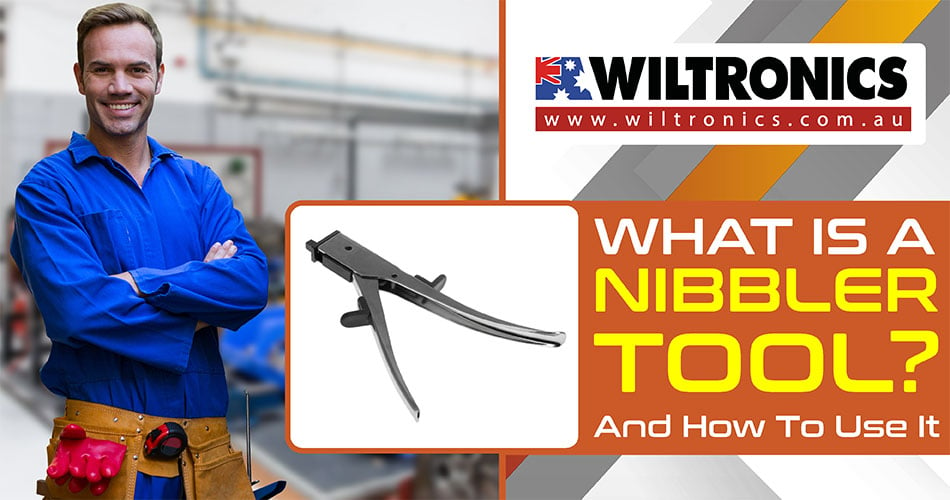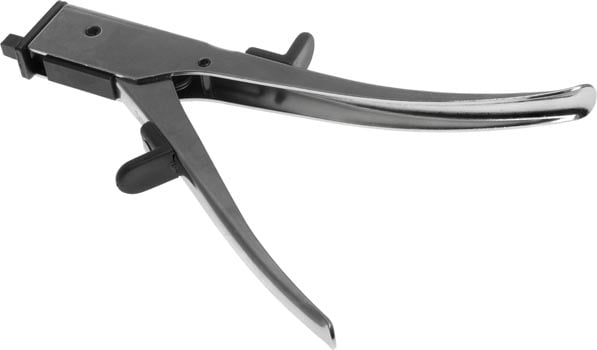What Is a Nibbler Tool? Learn What It Is and How To Use It
January 20, 2022

Metalworking is a complex task—but having the right tools makes it easier, and that is where a nibbler tool comes into play.
A nibbler is the kind of tool you do not think about until you really need it. Unless you are someone who deals with metal works and sculptures most of the time.
Nonetheless, it is always best to have nibblers at hand. For one, when your DIY project requires cutting metal sheets, you can complete the job quickly.
But what exactly is a nibbler tool? How does it work, and how do you use one? Read on to find out!
What Is A Nibbler Tool?
Nibblers are a must-have tool for metalworking. They provide intricate yet precise cutting with complete clean cuts.
In short, they are tools that cut through metal sheets. Using one reduces the manual effort required and finishes the task pronto.
Nibblers create straight and even cuts with minimal distortion of the metal sheet. They accomplish these cuts with an upward blade punching through the metal.
Some metal cutting tools do not leave clean cuts. They tend to leave traces on the metal, mainly if they use a thermal heating process.
Nibblers, in contrast, do not need heat to work. Thus, the sheets they work on won’t suffer from heat damage. Plus, the cuts they make are distortion-free, as mentioned above.
Moreover, nibblers work at high speed and consume exact amounts of metal as per their punch size. This results in consistent and clean cuts.
How Does a Nibbler Tool Work?
Nibblers work by applying force with a single blade, usually upward. The tracks on either side of the blade create a narrow channel. When the blade pushes the material through the channel, it removes a small bit of metal.
The force from the blade and the hard edge of the channels is how the tool achieves a clean-cut or no distortion. This is also why the cuts are much smaller than what you get with shears or snips.
Further, a nibbler leaves behind a narrow channel (6mm wide), also known as kerf. A kerf is a channel left behind by a saw or blade, measured by the width of the saw blade.
The actual size of the kerf depends on several factors, such as:
- The width of the blade and channel;
- The amount of material pulled out;
- Whether the blade wobbles when cut, affecting the size of the kerf—or not.
If the kerf from your nibbler tool varies in width, chances are the blade is loose or the nibbler is poor in quality.
How to Use a Nibbler Tool — Manual?
Your first step is to mark the material, a.k.a. the metal sheet. Mark the material you will cut so you can have a guide to follow with the nibbler tool.
The second is to remove the safety lock on the nibbler. Do this by flicking it downwards to release the blade.
Then, to cut the material. Position the tool on the material with the blade underneath. Push the handles together to cut through the material. Repeat the steps until the desired cut has been made.
Once the cut is complete, remove the nibbler and the waste material. Re-attach the safety lock to protect the blade whilst not in use.
Metalworking and Nibblers
Metalworking is the process of forming and shaping metals. It falls under the categories of forming, cutting and joining. It may also involve cutting, welding, casting, and moulding.
When it comes to cutting, this is where a nibbler becomes useful. It is a versatile tool that helps cut through metal sheets completely.
Nibblers are available in two forms: freehand and bench mounted. One of the most common freehand nibblers is the punch and die, which we will talk about more later.
Considering nibblers cut through metal sheets, they make an essential tool for metalworking. A nibbler tool can be advantageous when cutting small channels or cutouts.
With alternative methods, the process would usually be much more tedious. For the same reason, nibblers are often used by metalworkers to cut patterns out of sheet metal.
Nibblers vs Shears
Nibblers and shears perform the same cutting action, but there are a few differences.
Nibblers cut through sheet metal precisely without damaging the workpiece. This versatile tool is available in freehand use, or bench mounted versions.
Further, it can cut a wide range of steel materials in varying materials. It is ideal for cutting sections, small channels, tubes, and corrugated sheets.
Shears, in contrast, cut slight curves and straight cuts. This type of cutting tool is ideal for aluminium, brass, copper, lead, and other materials.
It is compact and is designed to provide faster and less effort cutting. Available in pneumatic or electric-powered versions, shears are known for their:
- High speed
- Optimum performance
- Efficiency
Now, let us take a look at some of their differences.
- Nibblers are not an ideal choice when it comes to cutting extremely fine lines. But this can be accomplished with the help of hand shears.
- Unlike shears, nibblers are widely chosen to cut patterns out of sheet metal.
- Shearing creates less waste compared to nibbling.
- A Shearing tool is suitable for heavier-duty cutting tasks compared to nibblers.
- Nibblers are easy to operate in difficult-to-access areas, unlike shears. They are great for prototyping and small production.
With this info, you must be able to make the right choice when choosing the best cutting tools for your needs.
Different Types of Nibblers
There is a diverse range of nibblers available. They cut a variety of materials but have their limitations as well. Whether you should use a nibbler tool, and which type, will depend on your project.
1. Punch and die
A standard manual nibbler that requires a significant amount of force and strength. This tool nibbles its way through the sheet metal at high speed.
It sprays out small semicircular chips as it is guided through the workpiece. Each ‘nibble’ takes out a small chunk of sheet metal when you apply pressure and ejects that shard as you release.
The process is called the punch & die assembly, hence the name. If you are looking for the best punch & die tool for beginners, check this out!

Metal Nibbling Tool
Product code: TL1768
This punch & die tool cuts up to an 18AWG mild steel sheet. It nibbles out small holes for fuse holders, connectors, and more. Squeeze the handles together to punch moves down and cut out a slug of material.
Other features include:
- Effective portable tool for punching holes through sheet steel
- Designed to fit in the palm of your hand for easy use
2. Nibbler shears
The most modern version of a manual nibbler available today. Unlike the standard one, which is held perpendicular, nibbler shears are held parallel.
The cut is made as the handles are squeezed together. The intuitive design is similar to snips or shears, but this ‘super nibbler’ uses a single blade.
Moreover, it is versatile enough to operate from an upward or downward position. Thus, you can have the blade cutting in either direction. The default state, ergonomically, is to have the blade cutting upward.
Nibbler shears are several inches longer than other nibbles, too. The design gives you more leverage, allowing you to make the same cuts with less force.
3. Benchtop nibbler
If you work with metal, a benchtop nibbler tool has you covered to power through the toughest jobs. As the name suggests, it is an electrical-powered benchtop machine.
Most units come with powerful motors for continuous operation and usually include:
- Punch
- Die
- Wrench 50
- Hex Wrench
- Washer
Note: Electric nibblers are available in corded, cordless, pneumatic and attachments. Your choice should be based on your requirements and preference.
Nibbler Tool: The Bottom Line
You will want to use a standard hand nibbler in some situations and nibbler shears in others. There are also scenarios where manual nibblers are not the best tool for the job.
In such cases, a benchtop version may come in handy or a pair of shears or snips. But if your goal is to minimise distortion, a nibbler like the punch & die should be enough for the job.
There you have it! We hope our short introduction to nibblers, mainly manual, has answered your questions. Might as well read our guide to crimping tools next to familiarise yourself more with hand tools!
© Wiltronics Research Pty Ltd 2022
Write a Comment
You must be logged in to post a comment.